





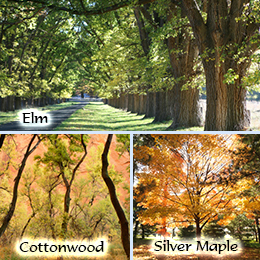 Though it may seem a cheaper option to plant volunteer tress from your neighbor's garden in your yard, these can actually cost you a lot more in the long run. Planting unidentified trees in your yard is a strict no-no.If you are determined to convert your backyard into a beautiful garden, with tall trees and tiny flower plants, then you should know which tree varieties are good, and which varieties can cause harm. Before deciding the varieties and locations of the trees, make sure you have enough knowledge about the varieties you are going to plant. Some trees are just bad for backyards, and can cause potential health hazards, to not only your yard, but your house and family members as well. Fast-growing trees are usually the first choice for homeowners who want to plant trees, but these are not necessarily the best choice. Their roots sprout fast and tend to encompass a major area around the house.
Though it may seem a cheaper option to plant volunteer tress from your neighbor's garden in your yard, these can actually cost you a lot more in the long run. Planting unidentified trees in your yard is a strict no-no.If you are determined to convert your backyard into a beautiful garden, with tall trees and tiny flower plants, then you should know which tree varieties are good, and which varieties can cause harm. Before deciding the varieties and locations of the trees, make sure you have enough knowledge about the varieties you are going to plant. Some trees are just bad for backyards, and can cause potential health hazards, to not only your yard, but your house and family members as well. Fast-growing trees are usually the first choice for homeowners who want to plant trees, but these are not necessarily the best choice. Their roots sprout fast and tend to encompass a major area around the house.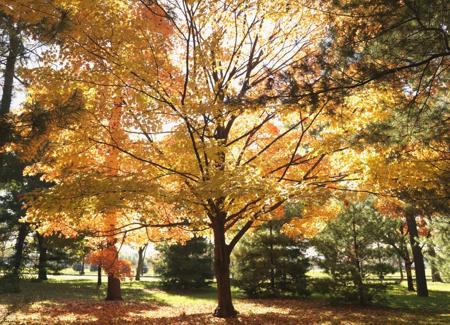 It is one of the fastest-growing trees that provides cool shade. However, due to its fast growth, the wood becomes brittle and weak, which ultimately becomes susceptible to breakage during severe storms. It has a shallow rooting system, which penetrates sewage pipelines, and cracks driveways and walkways. Also, it absorbs the moisture from the soil at a faster rate, leaving it dry and unsuitable for a lawn. Therefore, because of the nuisance it causes around the place, silver maple is considered a 'trash tree', and is the least desired variety by property owners.Cottonwood
It is one of the fastest-growing trees that provides cool shade. However, due to its fast growth, the wood becomes brittle and weak, which ultimately becomes susceptible to breakage during severe storms. It has a shallow rooting system, which penetrates sewage pipelines, and cracks driveways and walkways. Also, it absorbs the moisture from the soil at a faster rate, leaving it dry and unsuitable for a lawn. Therefore, because of the nuisance it causes around the place, silver maple is considered a 'trash tree', and is the least desired variety by property owners.Cottonwood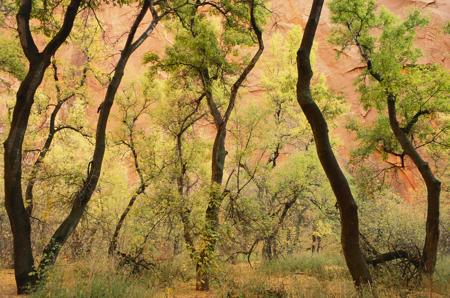 It is considered to be a wet tree, hence, cottonwood trees are planted along wet river banks for timber production. However, due to this characteristic, the cottonwood tends to rot very easily and quickly. The leaves of the cottonwood are very large and diamond-shaped. They have some unique characteristics, which attract insects towards the tree. These insects destroy the leaves, the wood, and eventually the entire tree. To prevent these problems, you may have to invest a lot of time and money. It is also a fast-growing tree, which results in brittle, weak wood, that can break easily during a storm. High-bred varieties have a short lifespan, and die at the age of 25-35 years. This results in an expensive removal of the tree, offering it the status of 'money tree' in the tree removal business.Elm
It is considered to be a wet tree, hence, cottonwood trees are planted along wet river banks for timber production. However, due to this characteristic, the cottonwood tends to rot very easily and quickly. The leaves of the cottonwood are very large and diamond-shaped. They have some unique characteristics, which attract insects towards the tree. These insects destroy the leaves, the wood, and eventually the entire tree. To prevent these problems, you may have to invest a lot of time and money. It is also a fast-growing tree, which results in brittle, weak wood, that can break easily during a storm. High-bred varieties have a short lifespan, and die at the age of 25-35 years. This results in an expensive removal of the tree, offering it the status of 'money tree' in the tree removal business.Elm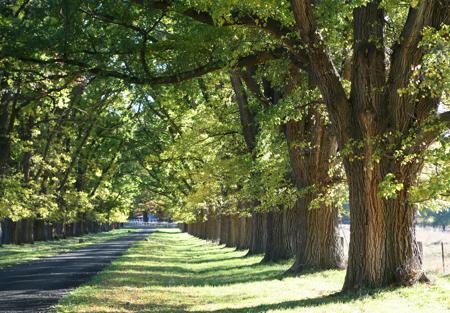 The American Elm, of all elm varieties, is the most long-lived tree, with a lifespan of around 300-400 years. Being a strong and stable variety, the American elm is not prone to failure. Due to these qualities, many property owners want to grow this elm variety on their land. However, there are a few serious disadvantages of owning this tree, and many property owners regret planting it when they suffer from an expensive removal of the tree. The elm bark beetle dwells on the elm tree, thereby infecting it with the Dutch Elm Disease due to bacterial growth in the wood. Other elm varieties also harbor the beetles, but do not get infected by the disease. Furthermore, the American elm has a shallow root system, which invades sewage pipelines and foundations. Hence, they should never be planted close to walkways and driveways.Willow
The American Elm, of all elm varieties, is the most long-lived tree, with a lifespan of around 300-400 years. Being a strong and stable variety, the American elm is not prone to failure. Due to these qualities, many property owners want to grow this elm variety on their land. However, there are a few serious disadvantages of owning this tree, and many property owners regret planting it when they suffer from an expensive removal of the tree. The elm bark beetle dwells on the elm tree, thereby infecting it with the Dutch Elm Disease due to bacterial growth in the wood. Other elm varieties also harbor the beetles, but do not get infected by the disease. Furthermore, the American elm has a shallow root system, which invades sewage pipelines and foundations. Hence, they should never be planted close to walkways and driveways.Willow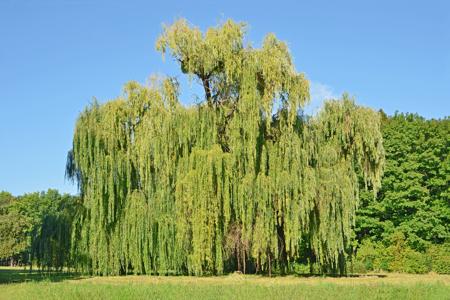 As is the case with other tree varieties mentioned here, the willow also grows at a rapid rate, thereby producing brittle wood. It requires a lot of water, and when there is scarcity of water, the roots reach out to other resources like sewage pipelines and other underground sources. The smallest storm may fill your yard with small, and even large, broken branches due to the weakness of the wood, costing you large amounts for its maintenance.Black Walnut
As is the case with other tree varieties mentioned here, the willow also grows at a rapid rate, thereby producing brittle wood. It requires a lot of water, and when there is scarcity of water, the roots reach out to other resources like sewage pipelines and other underground sources. The smallest storm may fill your yard with small, and even large, broken branches due to the weakness of the wood, costing you large amounts for its maintenance.Black Walnut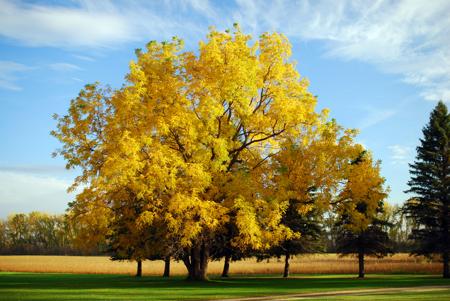 It has a unique characteristic, that is not only harmful for the land of your yard, but also for the plants thriving near its root zone. The black walnut tree fills its roots, buds, leaves, and the stem with the juglone toxin to create a suitable environment for its growth. The toxin from the roots seep into the soil and affect the roots of companion trees. These trees then start turning yellow and die eventually. Hence, to prevent other trees from a bad neighborhood, avoid planting a black walnut tree in your yard. Other bad trees that you should avoid planting in your yard, include: ❑ Quaking Aspen
It has a unique characteristic, that is not only harmful for the land of your yard, but also for the plants thriving near its root zone. The black walnut tree fills its roots, buds, leaves, and the stem with the juglone toxin to create a suitable environment for its growth. The toxin from the roots seep into the soil and affect the roots of companion trees. These trees then start turning yellow and die eventually. Hence, to prevent other trees from a bad neighborhood, avoid planting a black walnut tree in your yard. Other bad trees that you should avoid planting in your yard, include: ❑ Quaking AspenCopyright © www.100flowers.win Botanic Garden All Rights Reserved